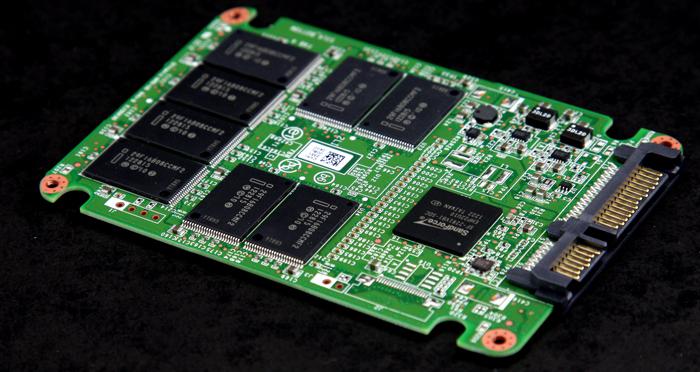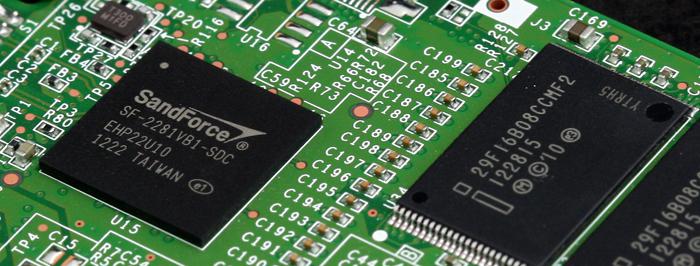Product showcase
The SSD can be opened up easily and shows a full-sized PCB with a plastic spacer that spans the drive perimeter. This 6Gbps storage unit makes use of Intel 20nm MLC NAND. And at the photo below where we flip the PCB around on the right the SandForce 2281 controller can be seen.
At total of 16 NAND flash memory ICs (eight on each side) can be spotted on the PCB. The NAND FLASH partition are assigned to the SandForce 2281 controller.
SandForce, opposed to other controllers, enforces a trick as they can write to the FLASH memory less then the competition needs to by using real time compression. The SF controllers store a representation of your data and not the actual data itself. It does that by using a partition of the available NAND flash memory.
This is why on SandForce based drives you do not see an extra memory cache chip, which in fact saves on the bill of materials used for the SSDs, it will howevere make your available storage volume smaller, as Sandforce uses some of the NAND flash for compression.
Now we mentioned it already, but the SF-2281 series controller will support up to roughly 500MB/s sequential read and write speeds, that's a good 62.5MB/s per one of the available eight channels. Combined the bandwidth is just exceptional for single non RAID drive. SF-2281 controllers support TRIM. Deduct a few GB per partition for real-time data compression and then you have your SSD ready.
MLC NAND is 20nm in architecture. Intel manufactures the NAND memory with IM Flash Technologies (IMFT). Intel states that it is the first in the industry to leverage a Hi-K/metal gate planar cell technology. This overcomes " the inherent difficulties that accompany advanced process technology" which translates to equal performance and reliability found in the larger 25nm NAND because as most know, the smaller the architecture the greater the error rate which needs compensation. Well, there you have it.






